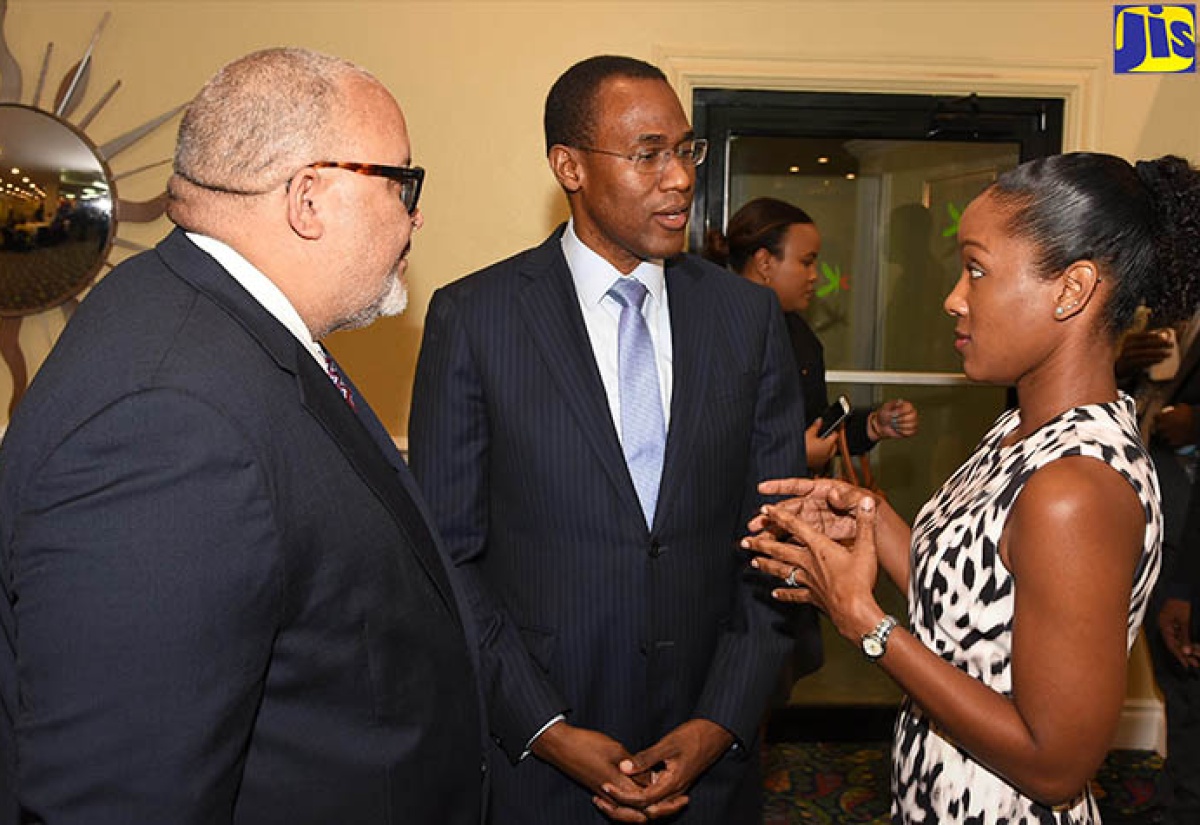Debt-To-GDP Ratio to Dip Below 100 Per Cent for 2018/19 – Dr. Clarke
By: , May 17, 2018The Key Point:
The Facts
- The debt-to-GDP ratio is a measure of a country’s debt compared to its economic output. A low debt-to-GDP ratio indicates an economy that produces and sells goods and services sufficient to pay back debts without incurring further debt.
- Dr. Clarke noted that at its height, Jamaica’s debt as a proportion of GDP was about 147 per cent.
The Full Story
Minister of Finance and the Public Service, Dr. the Hon. Nigel Clarke, says the country’s debt-to-gross domestic product (GDP) ratio is projected to fall below 100 per cent at the end of the 2018/19 fiscal year.
The Minister was speaking at the Pension Funds Association of Jamaica’s annual luncheon at The Knutsford Court Hotel in New Kingston on May 16.
The debt-to-GDP ratio is a measure of a country’s debt compared to its economic output. A low debt-to-GDP ratio indicates an economy that produces and sells goods and services sufficient to pay back debts without incurring further debt.
Government debt as a per cent of GDP is used by investors to measure a country’s ability to make future payments on its debt, thus affecting the country’s borrowing costs and Government bond yields.
Dr. Clarke noted that at its height, Jamaica’s debt as a proportion of GDP was about 147 per cent.
“At the end of this financial year, we are projecting that for the first time in this century, the debt to GDP rate is going to go below 100 per cent,” he said.
This, he noted, will allow the Government to create more investments and job-generating opportunities for Jamaicans.
“What that means for pension funds and institutional investors is that the Government coming out with a need to borrow, borrow, borrow…is going to be curtailed. That provides a tremendous opportunity to accelerate our efforts to convert and redirect savings away from the Government and into investments and into job creation and into economic empowering activities for all Jamaicans,” he pointed out.
Dr. Clarke, in the meantime, urged pension funds to take prudent investment risks in a bid to meet the needs of pensioners.
“Pension funds will no longer be able to be comfortable in risk-free assets, because if you stay in risk-free assets, you’ll never be able to accumulate the resources required to fund pension arrangements. So pension funds are going to have to take prudent investment risks, which means our risks and investment framework are going to have to be updated,” he said.
“What is going to drive that… for pension funds to have a real return in an environment where the risk-free rate or the rate on GOJ securities doesn’t provide any real buffer is the fact that the Government’s appetite for borrowing has been significantly curtailed,” he pointed out.
As at June 2017, the Financial Services Commission (FSC) reported that there were 399 active private pension plans with assets of $520.6 billion covering 9.4 per cent of the employed labour force or about 115,000 persons.
The Government’s pension would increase the figure to 16 per cent of the employed labour force.


